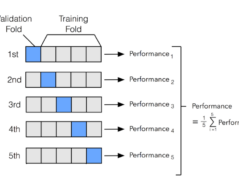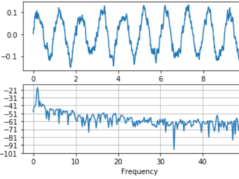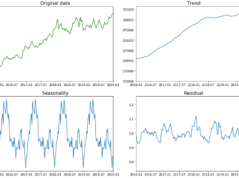
Bayesian Filters: Decoding the Magic in Financial Markets
Introduction to Bayesian Filter
Every day, the financial markets generate a gargantuan volume of data. Traders, investors, analysts, and portfolio managers are consistently seeking better tools and techniques to extract meaningful insights from this data. Today, we're spotlighting one such tool: Bayesian Filters. These tools, while not new, remain a largely untapped resource in the field of financial analytics.
The Heart of Bayesian Filters: Probability
At its core, Bayesian Filters function based on probability. They employ the principles of Bayesian probability to update predictions about future events based on prior knowledge and incoming data. Bayesian Filters are often compared to a data-hungry machine: continually seeking new information to refine its predictions and retaining a memory of past data.
The uniqueness of Bayesian Filters stems from this iterative process. With each new piece of data, they adjust their predictions. This dynamic approach allows for a more realistic representation of the financial markets fluid nature.
Bayesian Filters in Action: Practical Applications
When we delve into the financial world, two areas showcase the utility of Bayesian Filters: Quantitative Portfolio Management and High-Frequency Trading.
Quantitative Portfolio Management: Portfolio managers often use Bayesian Filters in predictive modelling. They can optimize portfolio selections and better assess risk based on the probability profiles created by these filters.
High-Frequency Trading: Speed is of the essence in high-frequency trading, and the real-time predictions facilitated by Bayesian Filters are invaluable. They allow for swift decision-making, thereby reducing latencies and improving the efficacy of trades.
A Word of Caution: Limitations of Bayesian Filters
While Bayesian Filters bring numerous benefits, they are not without their limitations. The most significant of these is the high computational requirement. Bayesian Filters can consume significant computational resources, especially when dealing with complex or vast data sets.
Additionally, a Bayesian Filter is only as good as the initial knowledge base it has access to. The Filter's predictions may be less accurate without a robust knowledge base.
Bayesian Filters: A Simplified Example
To understand the workings of a Bayesian Filter, let's take a simplified example. Assume a portfolio manager tracks a particular security that displays a cyclical pattern every few days. Given its knowledge of the security's past behaviour, the Bayesian Filter predicts the likelihood of this cycle continuing.
However, a sudden geopolitical event occurs that disrupts the market. While the Bayesian Filter can adjust its predictions to account for new data, this unexpected event introduces an element of uncertainty, underlining that while Bayesian Filters can predict with greater accuracy, they cannot foresee every potential market disruptor.
The Future of Bayesian Filters in Financial Markets
Despite their limitations, the value that Bayesian Filters bring to the field of financial analysis is undeniable. By providing a dynamic and flexible approach to prediction, they can handle the inherent uncertainties and complexities of financial markets.
As computational power continues to grow and the availability and quality of financial data improve, we can expect Bayesian Filters to play an even more crucial role in finance. However, we must remember that while these tools can make our predictions more accurate, they are not crystal balls. They should be used with other tools and techniques, not as a standalone solution.
Financial markets are complex systems that require robust and sophisticated tools for analysis. With their ability to dynamically combine past knowledge and new information, Bayesian Filters present a promising approach to tackling this complexity. While not without limitations, their potential to revolutionize how we understand and interact with financial markets cannot be overstated. Embracing these tools is a step forward in our financial journey, paving the way for more informed decision-making and robust predictive modelling.
The understanding of Bayesian Filters, their application, and their limitations is just one cog in the vast wheel of financial market analysis. As we continue to explore this exciting field, let us remember that the essence of financial market analysis is not just about making predictions but also understanding the intricate tapestry of variables that drive market behaviour.
Follow Quantace Research
Why Should I Do Alpha Investing with Quantace Tiny Titans?
1) Since Apr 2021, Our premier basket product has delivered +41.7% Absolute Returns vs the Smallcap Benchmark Index return of +4.8%. So, we added a 37% Alpha.
2) Our Sharpe Ratio is at 1.4.
3) Our Annualised Risk is 20.1% vs Benchmark's 20.4%. So, a Better ROI at less risk.
4) It has generated Alpha in the challenging market phase.
5) It has a good consistency and costs 6000 INR for 6 Months.
-------------
Disclaimer: Investments in securities market are subject to market risks. Read all the related documents carefully before investing. Registration granted by SEBI and certification from NISM in no way guarantee performance of the intermediary or provide any assurance of returns to investors.
-------------
#research #future #investing #investments #markets #finance #riskmanagement #management #strategy #mathematics #algorithms #machinelearning #ai #algotrading #data #financialmarkets #quantitativeanalysis #change #money #help






